“I want to stand with you on a mountain; I want to bathe with you in the sea” – Savage Garden.
When your eyes feast themselves on the sheer views from the top of Masada at sunrise, you’ll raise a wry smile to match your wandering heart’s backpacking desire. The vantage points from the top of Masada in Israel are wildly inspiring. You might glance down in awe dumb struck by the wonder you’ve been cherished enough to witness first hand. For myself, memories of past glory days and hikes from my travels came rolling back. Machu Picchu, Sigiriya, Mount Amos, Mount Kinabalu and Danxiashan all flickered through my mind as I marvelled on the views down into the deserts, the Dead Sea and the very mountain I was stood on. Masada. This is certainly one of life’s better moments and you do think to yourself “what a wonderful world” when you watch the sunrise from the top of Masada. A bit of perspective needed though. A sadness is hidden within. And it feels odd. It’s important to know the story of Masada to get an understanding as to where this glorious mountain top fits into the whole equation of life, death, war and peace.
So what is Masada?
The way I describe Masada will be basically a marvellous old ruined city on top of a mountain. That is surely what Masada is. However most simply class it as a fortress. But people lived here. And lots of them. I feel it’s more worthy of a “ruined city” moniker than a mere “fortress”. This is a work of art by humans on top of a mountain that was already there. Like Machu Picchu, there are stories behind it. And perhaps the most significant detail is the fact that the word “sad” appears shyly inside the word “MaSADa”. Something bad happened here. Or maybe something good. Depending on your mindset.
Masada became a UNESCO World Heritage Site in 2001 and deservedly so. It was built by “Jonathan the High priest”, at least according to Josephus. It was ruled by King Herod, who was the King of Judea. It was an ancient Roman style fortress. It features not just the palace, main fortress and living quarters but camps by the base and an assault ramp. It is believed to be the most complete surviving ancient Roman siege system in the world.
Masada has a completely decorated history, from its early days in the Hasmonean Period (103 BC) through the Herodian Period, the Great Revolt and the Roman Siege of Masada, which is where the sadness comes into play.
OK so what happened at Masada?
Mass suicide. At least according to sources, and reported in detail by Josephus Flavius so that’s the story we go with. Basically Masada was the last remaining Jewish rebel stronghold in Judea in the year 73 AD. The Romans , with their 8,000 troops apparently built camps all around the base of the mountain. These bases are still visible today or at least the ruins of them. The plan was to invade of course and make the whole place theirs. But the Jews had other ideas. Except they were destined to lose the battle, so one of the leaders, Eleazar Ben Yair gave speeches to the 960 people living on Masada and told them that suicide was the way forward. Mass suicide.
The opinion was that when the Romans came to attack, they would find all the Jews already dead and slaughtered, meaning the victory and siege of Masada would be bittersweet for the Romans. Hell, they may even have caught disease seeing all these dead bodies at the top of a mountain, or on the cliffside. And with a self inflicted mass act such as this, it would also have been hard for the Romans to move in there after the siege. The thought of a mass suicide of dead Jews lying there would in essence not be a victory for the Romans. It was the belief of the Jews that they did not want to become slaves or to be killed by the Romans so they did it themselves. And they did. They set parts of Masada alight, they killed themselves and they killed each other in a crazy act.
When the Romans came to the top of the mountain they saw the dead Jews, except for seven people it is believed who remained alive. These were two women and five children, who had been hiding in the cisterns. Everyone else was dead.
A sad and chilling story, whether you believe it or not, it’s part of your adventure to Masada, so take it all in, and then get on with the hike…
Where is Masada?
The raised plateau and mountain top of Masada is located on the eastern edge of the Judean Desert. Masada is near the Dead Sea and not far from En Gedi, a desert oasis and nature reserve. Masada itself is a lone mountain in a plateau of mountains which are 450 metres above the level of the Dead Sea.
How do you get to Masada?
Masada may be an old city or fortress, but its isolated location adds to the wonder of it. If you book the tour with Abraham Hostels, easily the best hostel in Israel, then getting there is included. There are a few different tours and I did the Masada Sunrise tour, which I strongly recommend. However if you just want to visit Masada and aren’t bothered with the sunrise viewing, there’s a normal day time tour as well. The Abraham Hostels tour bus will take you direct to the entrance to Masada. Entry fee to the mountain is not included. Here’s another overview of the Masada Sunrise tour with Tourist Israel.
The cheaper backpacking option is to go it alone, and get a bus. The problem is, you probably won’t make it for sunrise using the bus (so I really recommend doing it with a tour this time). Check closer to the time you travel, as the months vary the bus timetables, but as a general rule, buses from Jerusalem and Eilat run to Masada frequently on a daily basis. Buses 444 and 486 leave from Jerusalem and take around 2 and a half hours to the base of Masada. They take a bit longer as they go via the Dead Sea first. From the south, a bus from Eilat will take around 4 hours. There are no trains and no airport nearby.
Hiring a car or sharing a taxi are the other options, but they are of course more expensive.
How much does it cost to get into Masada?
The current price for a normal adult is 29 Israeli Shekels. If booked through a tour such as our one with Abraham Tours, you’ll get it cheaper, at 22 Shekels 
That 7 Shekel saving paid for my cheap beer in the local shop that night. Children, students and OAPs will all be cheaper of course. If you go after 8 am there is a cable car option, which costs a further 29 Shekels one way. If you’re fit and healthy, avoid this option please!
Why go at sunrise?
I’d really recommend going to Masada for sunrise. It’s a truly rewarding hike up to the top, and when that orange sphere rises through the Jordanian skyline in the East, shining it’s rays over charming Masada in Israel, you’ll have your fix of travel memories to last a lifetime. Sunrise at Masada is sensational and needs to be seen. Plus you’ll avoid the crazy tourist rush.
How long does it take to hike Masada?
OK so for sunrise, hiking up the mountain is the only realistic option. The cable car to the top doesn’t open until 8am, so walking up the mountain is what you will do. You walk up a twisting path on the mountain side known as the “Snake Path”. Its name relates to the zig zag design of the path rather than the threat of an unexpected viper rolling around on the rocks as you ascend. Get onto the snake path and make your way to the top. It should take about one hour. Faster hikers can kill it in 45 minutes. Even the “slow coaches” will have it done in 90 minutes. Going back down is considerably easier and shorter.
What time should you start to hike up Masada to make it for sunrise?
You’ll need to head up when it’s dark. It varies on the time of the season, so do check things out in advance. We were there in early October and we woke up at 3am, left the hostel on the bus at 4am and started the hike before 5.30 am. We were at the top by 6.30 am before the sun had risen in the distance. If you do the tour with Abraham Tours, the timing of it will be tailored to make sure you make it to the top for sunrise.
What do you need to take up to the top of Masada?
You’re going to be going up, hanging around for a while then coming back down. So camping equipment is not needed! Here’s what I recommend taking:
– Water
– A flask of coffee or tea
– A torch
– A headlamp
– A coat, jumper or jacket (in some months it will get cold)
– Suncream
– Insect Repellent
– A camera
– A cap
– A map or guidebook of Masada (a free one is available in a few languages at the entrance)
What if you don’t go for sunrise?
Again it’s no problem going anytime of day and it is open from dawn until dusk. Going up late at night isn’t an option, but anytime during the day is fine. If your schedule means you have to go during the daytime, the views will be equally amazing, the hike a fantastic experience and you’ll love it. Just be aware that in the daytime you might encounter more tourists, tour groups on guided tours and you won’t see the magical sunrise. Another added advantage of doing it for sunrise is that you avoid the crowds and can have the peak mostly to yourself.
What are the main places to visit at Masada?
Once you’re at the top, you’re free to walk around at your own leisure. You can do it all, you can pick and choose and you can walk around and relax. Despite the history, it’s a pleasant place to walk around. Information boards are everywhere in Hebrew and English. The key places to see are:
1. The Peak – the top of the Plateau
2. The Western Palace
3. The synagogue
4. The Northern Palace
Those that are really into the history of it all, can spend much longer there and do the Western Entrance too, including the tomb of the Zealots and the siege ramp path. There is also a massive tourist centre at the Eastern entrance (the main one) to check out. Souvenirs are available there.
A final shout out to Alon Kruger, our driver for the day. Alon is a great guide and driver. He gave us descriptions on the way and really set the mood with his choice of songs. After doing the top of Masada on route to the Dead Sea (which I’ll also write about when I get time), he chimed in the Savage Garden song “Truly, Madly, Deeply” onto the minibus stereo. Featuring the line “I wanna stand with you on a mountain, I want to be the with you in the sea. I want to lie like this forever until the sky falls down on me.” This was fitting and a video of it in included below.
I hope that covers the lot folks – my advice is do Masada for sunrise and breathe in the marvel of it all. It’s a place you won’t forget in a hurry.
Key Songs:
Savage Garden – Truly Madly Deeply (“I wanna stand with you on a mountain”):
Anything from Therapy? album, “Suicide Pact, You First”:
Seahorses – Suicide Drive:
My Videos from Masada will be added at some point. If you read this post and I still havent added them, please e-mail me and remind me. I’m a forgetful type…

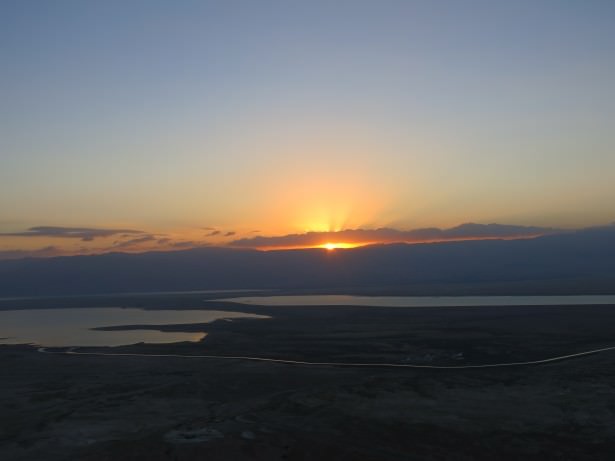
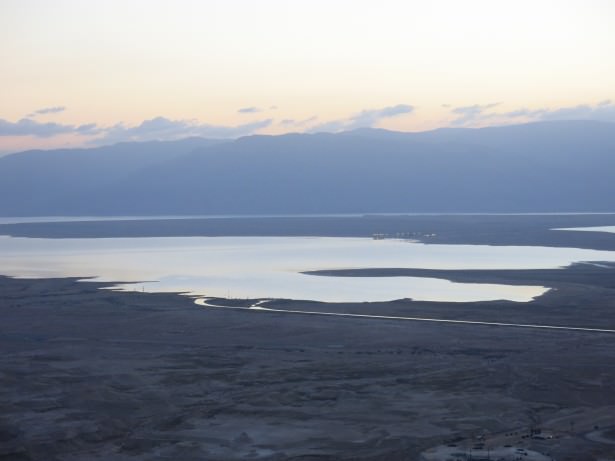
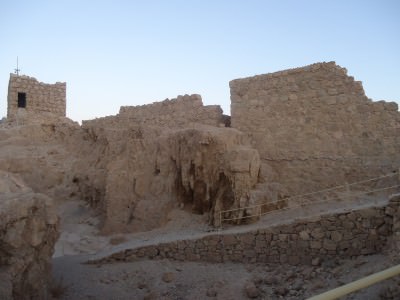


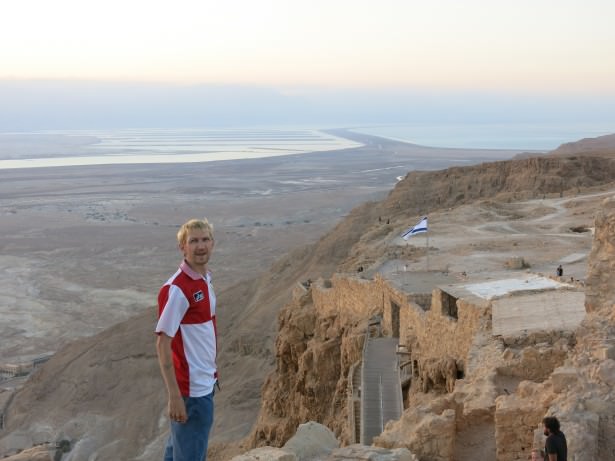
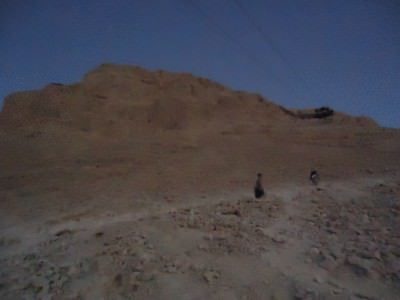
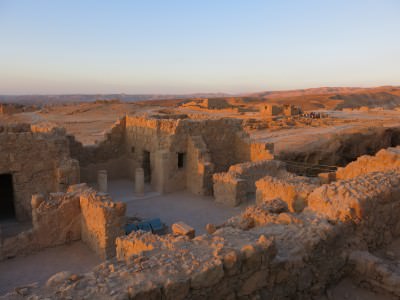
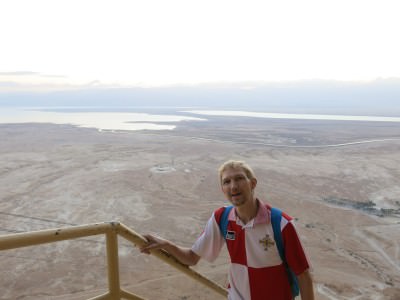
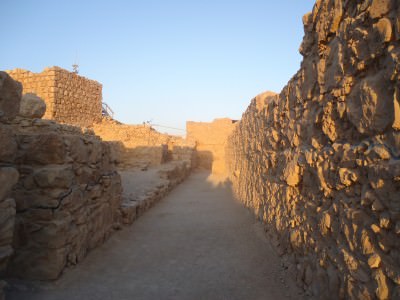

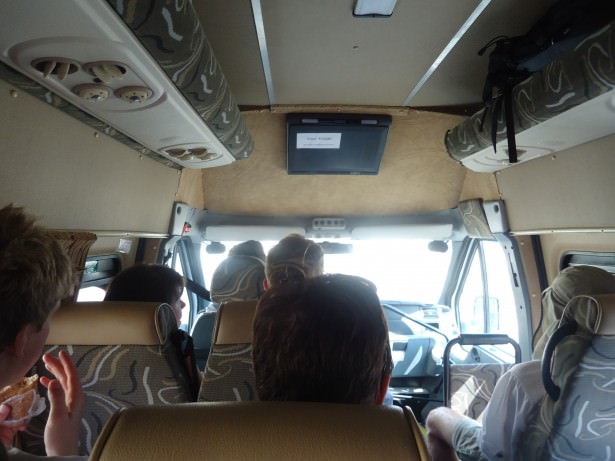


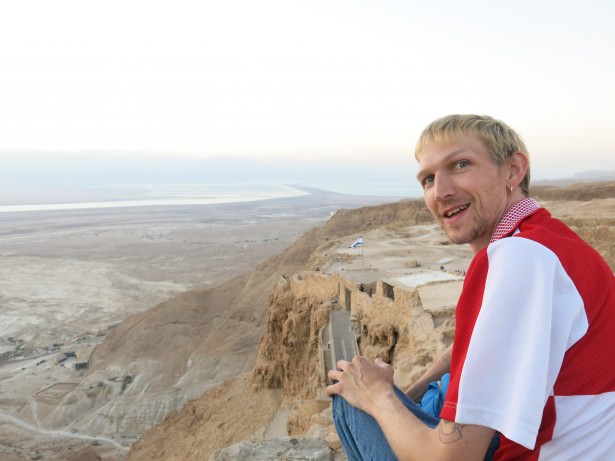
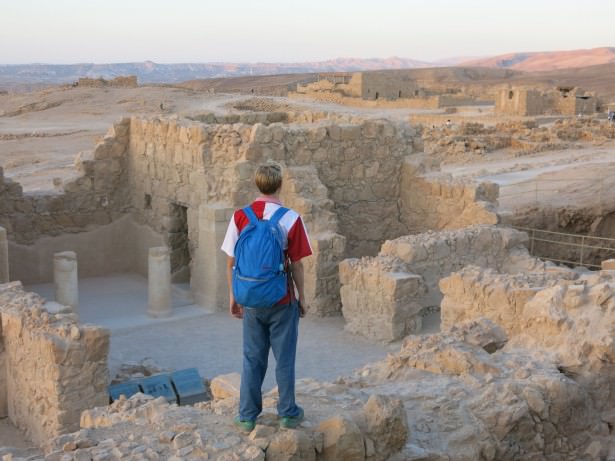
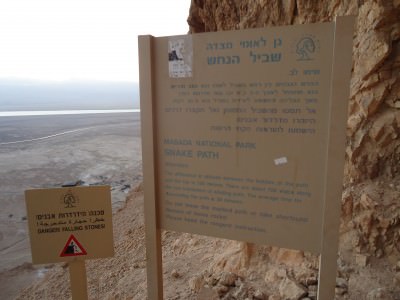
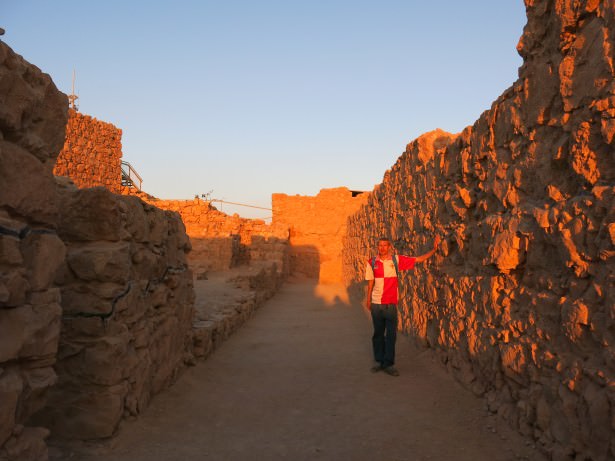
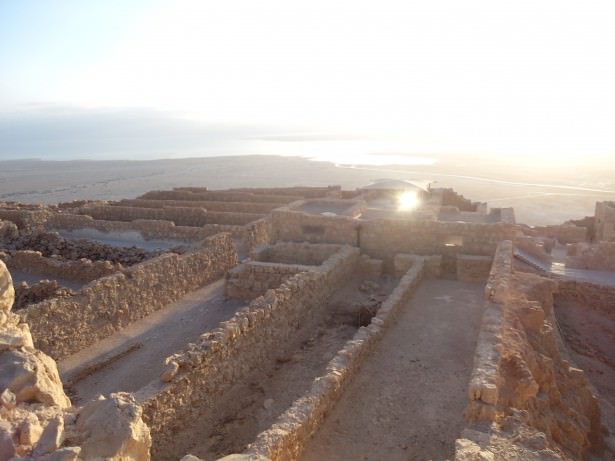
5 thoughts on “Backpacking in Israel: Epic Sunrise Up To The Lost City Of Masada”